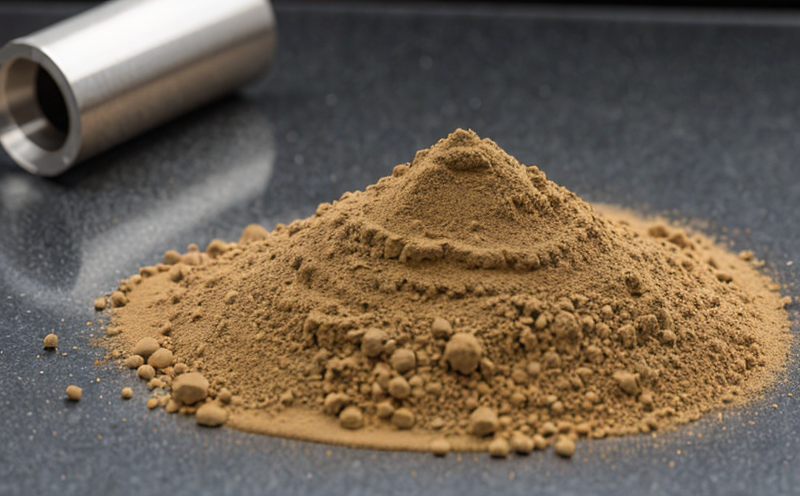ASTM D5045 Fracture Toughness Testing of Raw Materials
The ASTM D5045 standard provides a method to measure the fracture toughness (KiC) of metallic materials. This property is crucial for understanding the material's ability to resist crack propagation under dynamic loading conditions, which is particularly important in additive manufacturing and 3D printing processes where material quality can significantly impact final product performance.
The test involves subjecting a notched sample to controlled loading until fracture occurs. The method measures the energy absorbed during this process using a load-elongation curve. This approach allows for the characterization of raw materials intended for use in additive manufacturing, ensuring they meet specific requirements regarding toughness and reliability.
For 3D printed components, material properties such as KiC are critical because these parts often operate under complex loading conditions where crack initiation and propagation can lead to catastrophic failure. By applying ASTM D5045 testing early in the development process, manufacturers can identify potential weaknesses and optimize their processes for better quality assurance.
The test setup typically includes a universal testing machine (UTM) equipped with specific grips and fixtures designed to hold specimens in place during loading. Specimen preparation is critical; it involves ensuring that the notched sample has consistent dimensions according to ASTM D5045 specifications. This ensures accurate measurement of KiC values, which can vary significantly depending on the orientation and location of the notch.
The testing procedure itself requires careful calibration of the UTM and adherence to strict environmental conditions to minimize thermal or mechanical effects that could influence test results. Specimen preparation must be performed under controlled conditions to avoid introducing errors into the measurement process. Once prepared, specimens are loaded into the machine and subjected to increasing loads until fracture occurs.
Data analysis involves plotting load versus deflection curves and calculating KiC values using specific formulas provided in ASTM D5045. These values represent the energy required to propagate a crack of a given size through the material. This information is invaluable for quality assurance departments as it provides insights into how different batches of raw materials perform under stress.
ASTM D5045 testing has been widely adopted in industries relying heavily on metallic components, including aerospace, automotive, and medical device manufacturing. By incorporating this test into their quality control protocols, manufacturers can ensure that the materials they use are not only robust but also consistent across batches. This consistency is particularly important given the variability inherent in additive manufacturing processes.
In conclusion, ASTM D5045 fracture toughness testing of raw materials plays a pivotal role in ensuring the reliability and safety of 3D printed components. By leveraging this standard, manufacturers can enhance their quality assurance practices, leading to more dependable products that meet stringent industry standards and regulations.
Benefits
The benefits of ASTM D5045 fracture toughness testing are manifold:
- Precision Measurement: Provides accurate measurements of KiC, enabling precise characterization of raw materials.
- Quality Control: Ensures that all batches of raw material meet the required standards for performance and reliability.
- Risk Mitigation: Identifies potential weaknesses in raw materials early, reducing the risk of product failure during use.
- Consistency: Guarantees consistent quality across different production runs by adhering to strict ASTM D5045 specifications.
- Regulatory Compliance: Ensures compliance with international standards like ASTM and ISO, which is crucial for global market entry.
- Improved Product Reliability: Enhances the overall reliability of 3D printed components by ensuring that raw materials are suitable for use in complex applications.
These benefits underscore the importance of ASTM D5045 testing in maintaining high standards of product quality and safety across various industries.
Detailed Advantages of Eurolab's Testing Services
Eurolab offers a range of advantages when it comes to ASTM D5045 fracture toughness testing:
- Expertise in Additive Manufacturing: Our team has extensive experience in the field, ensuring accurate and reliable results.
- State-of-the-Art Equipment: We use cutting-edge UTM systems that meet all international standards for precision and accuracy.
- Precision Specimen Preparation: Ensuring that every sample is prepared according to ASTM D5045 specifications, leading to consistent results.
- Data Analysis Expertise: Our analysts are trained to interpret complex data sets accurately, providing actionable insights for improvement.
- Compliance with International Standards: We adhere strictly to ASTM and ISO standards, ensuring that our tests meet global regulatory requirements.
- Rapid Turnaround Times: We understand the importance of timely results and strive to deliver reports within industry benchmarks.
- Custom Solutions: Tailored testing protocols are available for specific material types and applications.
These advantages make Eurolab a leader in providing high-quality ASTM D5045 fracture toughness testing services, ensuring that our clients receive the best possible outcomes from their testing needs.
Why Choose This Test
The choice to conduct ASTM D5045 fracture toughness testing is driven by several key factors:
- Enhanced Reliability: Ensures that the materials used in additive manufacturing processes are reliable and capable of withstanding stress without failure.
- Quality Assurance: Provides a robust framework for quality control, helping to identify any inconsistencies or defects early on.
- Risk Reduction: Minimizes the risk of product failures due to material weaknesses by ensuring that only high-quality materials are used in production.
- Regulatory Compliance: Meets stringent regulatory requirements for metal additive manufacturing, ensuring compliance with international standards like ASTM and ISO.
- Innovation Support: Helps R&D teams identify areas for improvement and innovation by providing detailed insights into material performance.
- Cost-Effectiveness: By identifying issues early in the development process, organizations can avoid costly rework or product recalls later on.
These factors highlight why ASTM D5045 testing is an essential tool for ensuring high-quality and reliable products across various industries.





